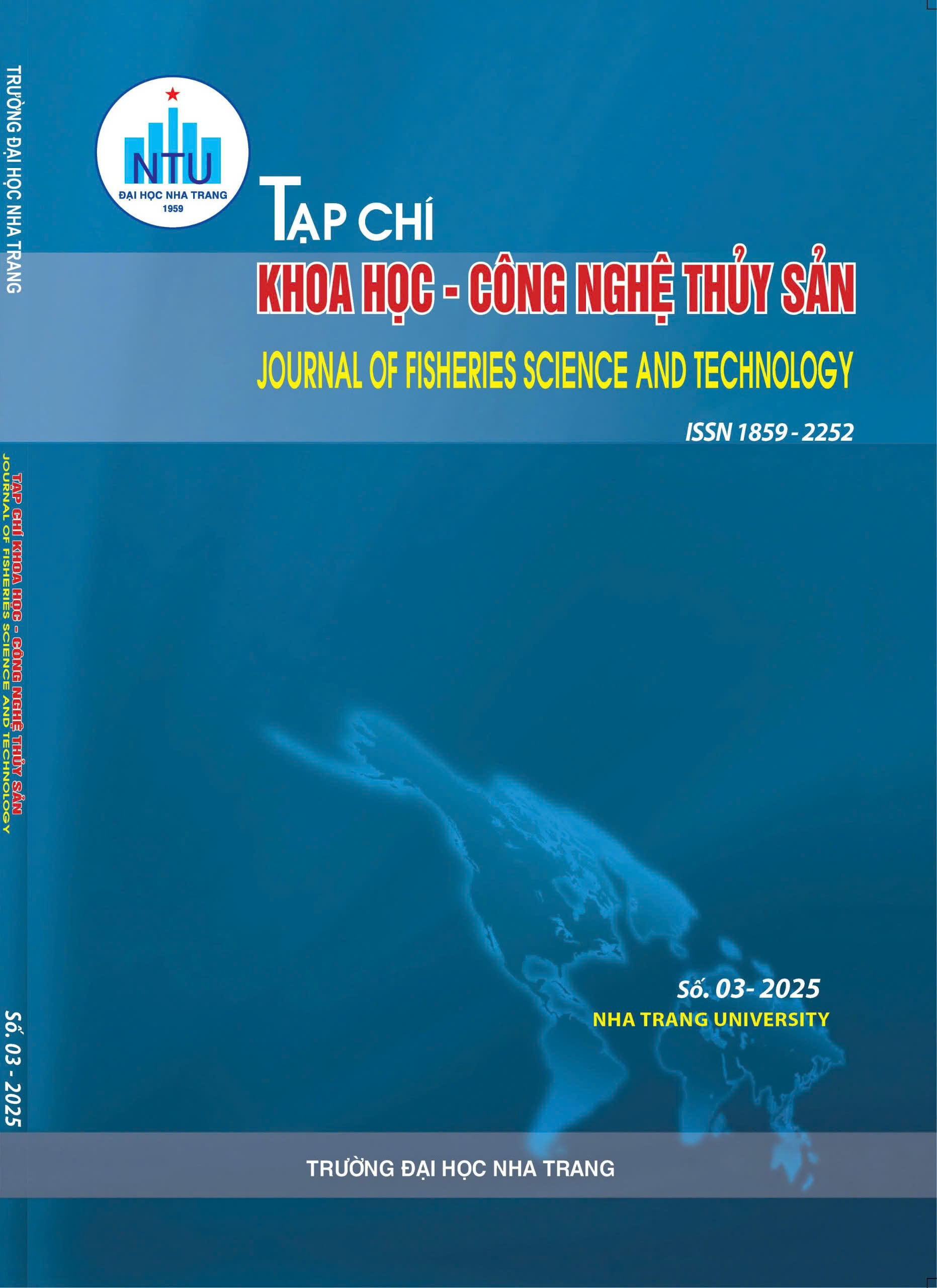##plugins.themes.huaf_theme.article.main##
Tóm tắt
Để xác định loại vật bám tốt nhất và thức ăn tốt nhất cho ấu trùng trai ngọc nữ (Pteria penguin Roding, 1798), góp phần hoàn thiện qui trình ương nuôi, hai thí nghiệm đã được thực hiện trong các bể composite 100 lít. Mật độ tảo cho ăn từ 15.000 tế bào/ml đến 30.000 tế bào/ml. Mỗi thí nghiệm đều có 4 nghiệm thức, được lặp lại 4 lần và kéo dài 20 ngày. Thí nghiệm 1 gồm 4 nghiệm thức thức ăn tảo: TA1 (Nannochloropsis oculata và Isochrysis galbana với tỷ lệ 1:1), TA2 (N. oculata và Chaetoceros gracilis với tỷ lệ 1:1), TA3 (I. galbana và C. gracilis. với tỷ lệ 1:1) và TA4 (N. oculata, I. galbana và C. gracilis. với tỷ lệ 1:1:1). Mật độ ban đầu của ấu trùng chân bò là 3 con/ml. Kết quả cho thấy TA4 cho ấu trùng có kích thước trung bình chiều dài lớn nhất (1210 µm/con), tỷ lệ bám cao nhất (48,7 %) và tỉ lệ sống cao nhất (28,7%). Thí nghiệm 2 gồm 4 loại vật bám khác nhau: VB 1 (Lưới lan), VB 2 (Tôn nhựa), VB 3 (San hô chết) và VB 4 (Dây thừng). Ấu trùng được cho ăn như TA4 hai lần mỗi ngày. Kết quả cho thấy nghiệm thức VB 1 (Lưới lan) cho ấu trùng có kích thước trung bình chiều dài lớn nhất (1128.4 µm/con), tỉ lệ bám cao nhất (48,6%) và tỷ lệ sống cao nhất (28,6%).
Từ khóa: Ấu trùng giai đoạn sống đáy, trai ngọc nữ, vật bám
ABSTRACT
To determine the best substrates and the best food for winged pearl oyster (Pteria penguin Roding, 1798) larvae, contributing to the improvement of the rearing process, two experiments were conducted in 100- liter composite tanks. The feeding density of algae was from 15,000 cells/ml to 30,000 cells/ml. Each experiment had four treatments, replicated four times and lengthened in 20 days. Experiment 1 consisted of four mixed algae feed treatments: TA1 (Nannochloropsis oculata and Isochrysis galbana at a ratio of 1:1), TA2 (N. oculata and Chaetoceros gracilis at a ratio of 1:1), TA3 (I. galbana and C. gracilis at a ratio of 1:1), TA4 (N. oculata, I. galbana and C. gracilis at a ratio of 1:1:1). The initial density of pediveliger larvae was 3 larvae/ ml. The result showed that the larval averaged growth, settlement rate and survival rate of TA4 treatment were highest, corresponding to 1210 µm/ individual, 48.7% and 28.7% respectively. Experiment 2 has 4 different types of substrates: VB 1 (Orchid nets), VB 2 (Plastic sheets), VB 3 (Dead corals) and VB 4 (Ropes). Larvae were fed like TA4 twice a day. The result showed that the larval averaged growth, settlement rate and survival rate of VB 1 (Orchid nets) treatment obtained the best performance corresponding to 1128.4 µm/individual, 48.6% and 28.6% , respectively.
Key words: Spat stage, winged pearl oyster, substrates

